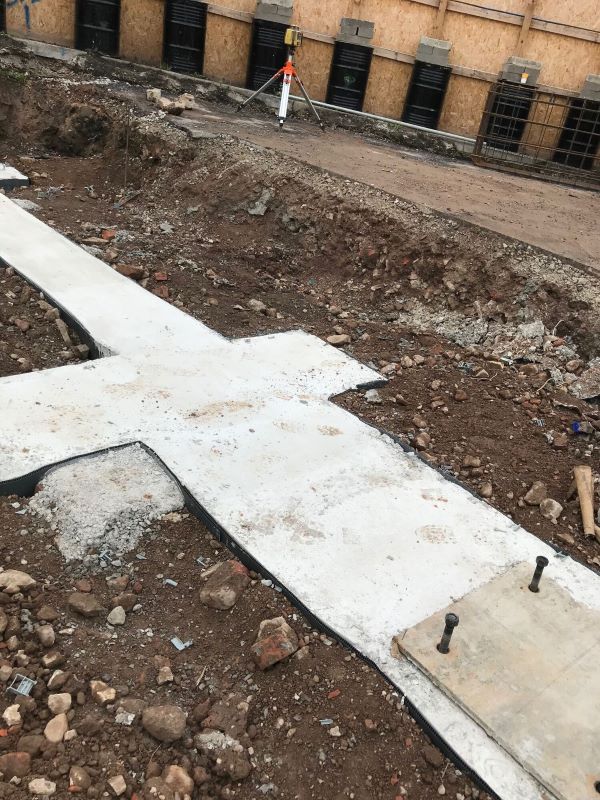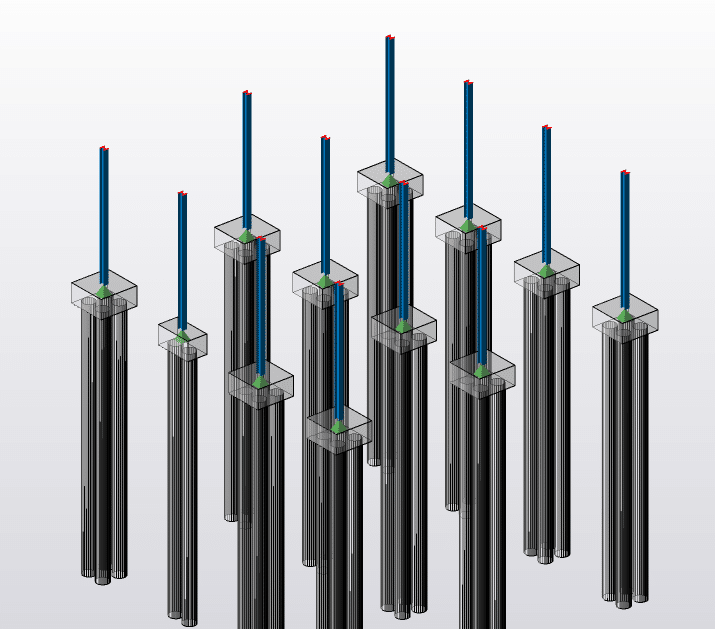Building Foundations
Table of Contents
Types of Foundations
Types of foundations that are commonly used for buildings or any kind of structure, are either shallow foundations or deep foundations.
The function of foundations is to provide support for the structures and transfers the building loads (dead and live) into the ground layers (soil or rock) and the ground bearing pressure and settlement will be checked by a geotechnical engineer to make sure the ground is adequate.
Shallow foundations are used for buildings where the load from the structure is relatively low load in comparison to the bearing capacity of the soil like masonry houses and low-rise buildings. Also, if there is soil with a high bearing pressure close to the surface, it can be effective putting large buildings on pad foundations.
Deep foundations such as piles are usually required for high-rise buildings which will have large loads coming down from their columns/walls . These deep foundations transfer loads to a more competent ground layer which is located deeper in the ground.
For example, a 10 storey concrete frame structure with slabs, columns and beams will have large large coming down the columns which needs to be supported by a foundation type. If the top layer on the construction site is made ground (weak ground strata) and the hard rock (sandstone) is found at deeper layers, then a piled foundation solution would be the best option to transfer those loads to a adequate load bearing ground layer.
Types of Shallow Foundations
Strip Foundations
Strip Foundations are commonly used for masonry wall buildings as they provide a continuous support. This type of support is useful for weaker soils and areas where pad foundations might also overlap.
These types of foundations are economical over pad foundations as a trench can be excavated and the foundation can be mass filled concrete.
However, heavy point loads from columns may require pad foundations instead to distribute the load or raft foundations as an alternative.

Pad Foundations
Pad foundations are shallow foundations (less than 3m deep), which provide support for structures and transfers loading into the soil/rock that should have sufficient bearing capacity. They are designed as reinforced concrete requiring steel in both the top and bottom of the foundation.
The size of the pad is dependent on the load and ground conditions, as they spread column/point loads over the pad area. As the reinforced concrete is assumed to be infinitely stiff, the load is assumed to be evenly spread through the pad to the ground soil.
Pad foundations are one of the types of foundations that do not require lots of excavation and is useful in areas where there is competent, good ground near the surface, but they are not good against differential settlement, uplift or wind forces.

Raft Foundation
Types of foundations such as raft foundations is a type of shallow foundation which generally covers the entire footprint of the building and is generally a 150-300mm thick reinforced slab. The raft spreads the load from walls, columns over the area, and is similar to floating on the ground.
This is useful for buildings with basements, differential settlement is an issue, floor areas with small structural loadings (two-storey buildings). If ground conditions are bad and require deep excavation for a pad foundation, then a raft can be used as an alternative.
Raft foundations are quick and easy to construct and install and do not require deep excavations but issues can arise in areas where there are large concentrated point loads (i.e, position of high localised shear).
A typical raft for a building or plot of houses will usually have top and bottom mesh reinforcement which is easy to lay and will prevent cracking. The edges of the raft will have ground beams/ edge thickenings which will support the masonry walls and a concrete toe to support the outer leaf of masonry.
The types of raft foundations are the following:
- Solid slab raft
- Cellular raft
- Piled raft
Types of Deep Foundations
Pile Foundations
Pile foundations are generally either concrete, steel or timber and looks like long slender columns. They are classified as end-bearing piles or skin friction piles.
End bearing piles rely on the bearing capacity of a hard ground layer (usually found at deeper ground levels) and friction piles rely on the friction developed by the shear stress along the sides of the piles (useful when hard ground layers are too deep).
Piles are installed using piling rigs and a pile cap is built at the head of the piles (pile cut off into the pile cap is 75mm). The piles are generally either driven or continuous flight augur piles. Driven piles are piles that are driven, jacked or vibrated into the ground using mechanical plant (vibration can be an issue). CFA piles, involve the removal of the soil from the ground at the location of the required pile and the pile is poured insitu at the same time (soil is removed and concrete is poured simultaneously).

Micro Piles
Micropiles are smaller piles in diameter and length and is commonly used in areas where access is restricted (i.e. existing buildings that need retrofitting and load paths have changed). They are usually screw/driven piles and specialists contractors design and install these pile types.
Pile Walls
Piles can be used to form permanent or temporary retaining wall. This is commonly used for basements but will need waterproofing in the permanent case (level of waterproofing depends on use of basement). Basements have different classifications depending on usage from grades 1-3 which relates to it’s water tightness (i.e. what level of damp is allowed and is any water seepage allowed).
Contiguous pile walls are installed with interlocking piles with one that is hard (reinforcement) and soft (no reinforcement).
Cassions
Cassions are a box like structure which is commonly used in areas where structural engineering works are required in areas submerged in water (i.e. rivers, estuaries and sea).
Examples are bridge piers, abutments in rivers, large waterfront structures such as groynes, gabion walls.
